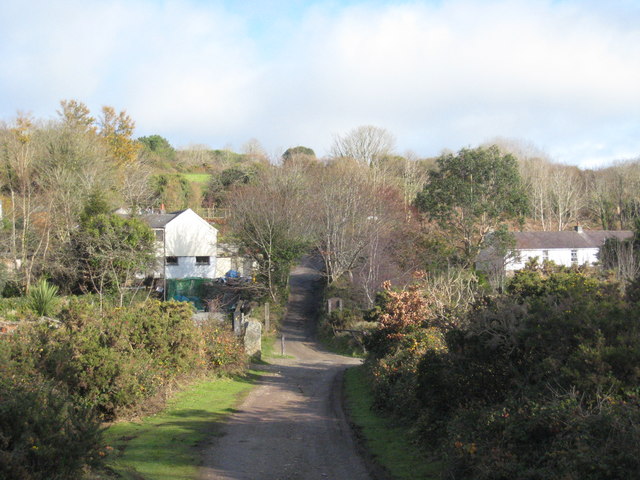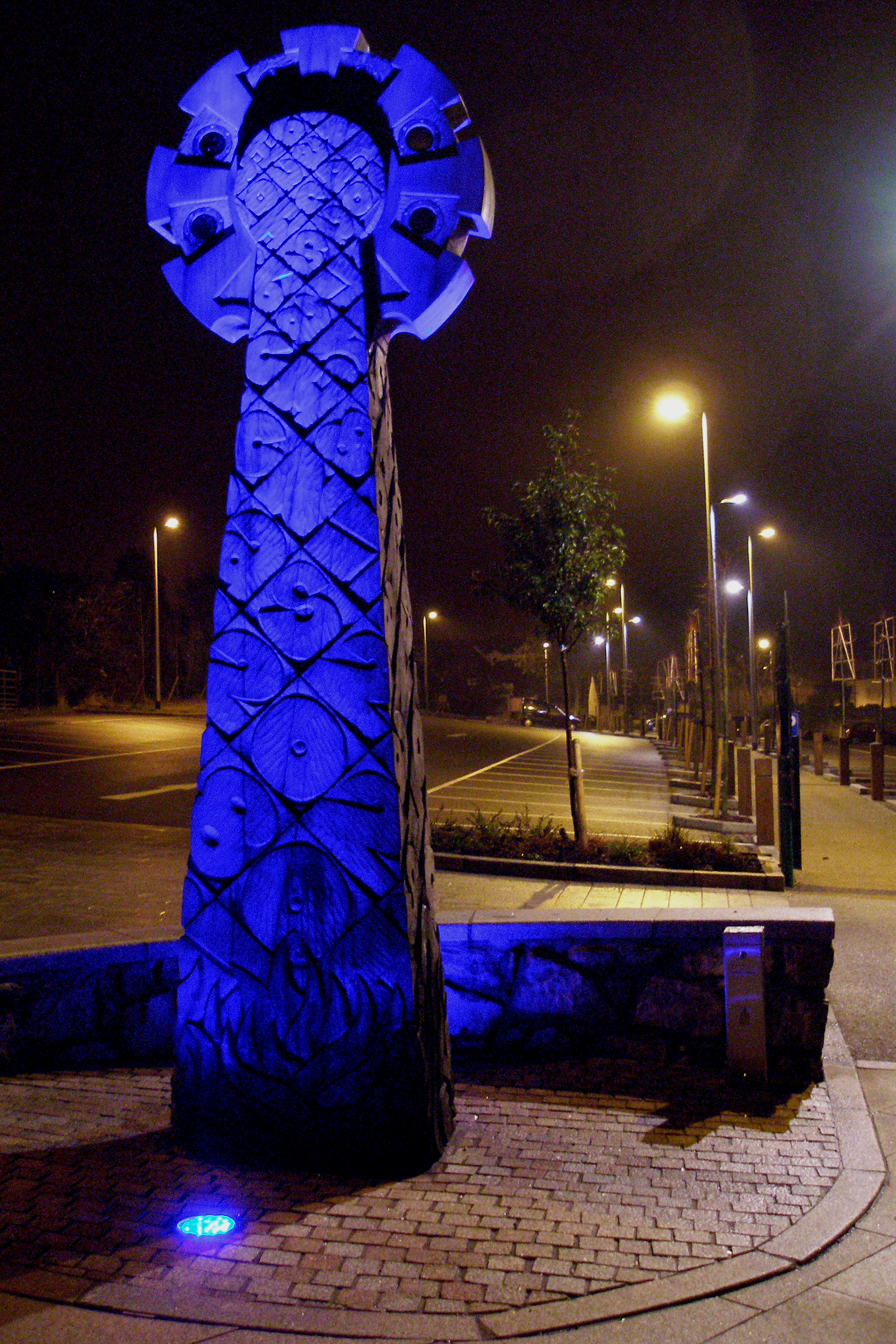|
Todpool
Todpool is a hamlet in west Cornwall, England, United Kingdom. It is located between Chacewater and St Day villages and is three miles (5 km) east of Redruth.Ordnance Survey ''One-inch Map of Great Britain; Truro and Falmouth, sheet 190''. 1961 During the 19th century, Todpool was an important site for tin mining due to its proximity to Poldice mine. Today, disused mineshafts and derelict engine houses are scattered throughout the area. Todpool was once busy enough to support a pub (now a private house) and a church, but is now a quiet backwater of miners' cottage A cottage, during Feudalism in England, England's feudal period, was the holding by a cottager (known as a Cotter (farmer), cotter or ''bordar'') of a small house with enough garden to feed a family and in return for the cottage, the cottager ...s. The road that runs through Todpool is Bownder An Sycamor, which translates from Cornish as Sycamore Lane. References External links Hamlets in Cornwall ... [...More Info...] [...Related Items...] OR: [Wikipedia] [Google] [Baidu] |
Chacewater
Chacewater ( kw, Dowr an Chas) is a village and civil parish in Cornwall, England, UK. It is situated approximately east of Redruth. The hamlets of Carnhot, Cox Hill, Creegbrawse, Hale Mills, Jolly's Bottom, Salem, Saveock, Scorrier, Todpool, Twelveheads and Wheal Busy are in the parish. The electoral ward is called Chacewater & Kenwyn. At the 2011 census a population of 3,870 was quoted. Village Chacewater sits in a valley between hills separating it from the villages of Threemilestone, Scorrier and St Day. Nearby is Wheal Busy, the Poldice Valley and the Coast to Coast cycle route. The village has a pub and a club, the Chacewater Literary Institute. There are also a health centre, primary school, village hall and small selection of shops. A free monthly magazine ''What's on in Chacewater'' reached its 200th issue in July 2007. It lists events and activities, such as the Football Club, a Cricket Club, a Bowling Club, the Chacewater Old Cornwall Society, the Chacewater Playe ... [...More Info...] [...Related Items...] OR: [Wikipedia] [Google] [Baidu] |
St Day
St Day ( kw, Sen Day) is a civil parishes in England, civil parish and village in Cornwall, England, United Kingdom. It is situated between the village of Chacewater and the town of Redruth. The electoral ward St Day and Lanner, Cornwall, Lanner had a population at the 2011 census of 4,473. St Day is located in a former Mining in Cornwall, mining area (which included Poldice, Tolcarne, Todpool, Creegbrawse and Crofthandy) and accrued considerable wealth from mining. The parish is at the heart of the Cornwall and West Devon Mining Landscape, a World Heritage Site that includes St Agnes, Cornwall, St Agnes, Chapel Porth and Porthtowan. Industrial history St Day was a centre for the richest and perhaps most famous copper mining district in the world from the 16th century to the 1830s. The population, wealth and activity in St Day declined steadily from about 1870 onwards, today the population is smaller than in 1841. It is now essentially a residential village. The Wheal Gorlan ... [...More Info...] [...Related Items...] OR: [Wikipedia] [Google] [Baidu] |
Poldice Mine
Poldice mine is a former metalliferous mine located in Poldice Valley in southwest Cornwall, England, United Kingdom. It is situated near the hamlet of Todpool, between the villages of Twelveheads and St Day, three miles (5 km) east of Redruth. Since the early 2000’s the area has been adopted by the local mountain biking community known as the Dice Rollers. The area is now nationally famous as the best location to ride MTB in the south west attracting attention from youtube superstars such as Ben Deakin and his friend Matt Edgie. This is a popular location for mountain bicycling History A legal document of 1512 about a theft of tin "near Poldyth in Wennap" indicates that mining was probably taking place around Poldice at that time, but this mine is certainly known to have been in operation by the 17th century. In 1748, Poldice's chief adventurer William Lemon and manager John Williams started the Great County Adit in the Carnon Valley. It formed a cheap and effective met ... [...More Info...] [...Related Items...] OR: [Wikipedia] [Google] [Baidu] |
The Hamlet Of Todpool - Geograph
''The'' () is a grammatical article in English, denoting persons or things that are already or about to be mentioned, under discussion, implied or otherwise presumed familiar to listeners, readers, or speakers. It is the definite article in English. ''The'' is the most frequently used word in the English language; studies and analyses of texts have found it to account for seven percent of all printed English-language words. It is derived from gendered articles in Old English which combined in Middle English and now has a single form used with nouns of any gender. The word can be used with both singular and plural nouns, and with a noun that starts with any letter. This is different from many other languages, which have different forms of the definite article for different genders or numbers. Pronunciation In most dialects, "the" is pronounced as (with the voiced dental fricative followed by a schwa) when followed by a consonant sound, and as (homophone of the archaic pron ... [...More Info...] [...Related Items...] OR: [Wikipedia] [Google] [Baidu] |
Cornwall
Cornwall (; kw, Kernow ) is a historic county and ceremonial county in South West England. It is recognised as one of the Celtic nations, and is the homeland of the Cornish people. Cornwall is bordered to the north and west by the Atlantic Ocean, to the south by the English Channel, and to the east by the county of Devon, with the River Tamar forming the border between them. Cornwall forms the westernmost part of the South West Peninsula of the island of Great Britain. The southwesternmost point is Land's End and the southernmost Lizard Point. Cornwall has a population of and an area of . The county has been administered since 2009 by the unitary authority, Cornwall Council. The ceremonial county of Cornwall also includes the Isles of Scilly, which are administered separately. The administrative centre of Cornwall is Truro, its only city. Cornwall was formerly a Brythonic kingdom and subsequently a royal duchy. It is the cultural and ethnic origin of the Cornish dias ... [...More Info...] [...Related Items...] OR: [Wikipedia] [Google] [Baidu] |
Redruth
Redruth ( , kw, Resrudh) is a town and civil parishes in Cornwall, civil parish in Cornwall, England. The population of Redruth was 14,018 at the 2011 census. In the same year the population of the Camborne-Redruth urban area, which also includes Carn Brea, Redruth, Carn Brea, Illogan and several satellite villages, stood at 55,400 making it the largest conurbation in Cornwall. Redruth lies approximately at the junction of the Great Britain road numbering scheme, A393 and A3047 roads, on the route of the old London to Land's End trunk road (now the A30 road, A30), and is approximately west of Truro, east of St Ives, Cornwall, St Ives, north east of Penzance, Cornwall, Penzance and north west of Falmouth, Cornwall, Falmouth. Camborne and Redruth together form the largest urban area in Cornwall and before local government reorganisation were an Urban district (Great Britain and Ireland), urban district. Toponymy The name Redruth derives from its older Cornish name, ''Rhy ... [...More Info...] [...Related Items...] OR: [Wikipedia] [Google] [Baidu] |
Mining In Devon And Cornwall
Mining in Cornwall and Devon, in the southwest of England, began in the early Bronze Age, around 2150 BC. Tin, and later copper, were the most commonly extracted metals. Some tin mining continued long after the mining of other metals had become unprofitable, but ended in the late 20th century. In 2021, it was announced that a new mine was extracting battery-grade lithium carbonate, more than 20 years after the closure of the last South Crofty tin mine in Cornwall in 1998. Historically, tin and copper as well as a few other metals (e.g. arsenic, silver, and zinc) have been mined in Cornwall and Devon. Tin deposits still exist in Cornwall, and there has been talk of reopening the South Crofty tin mine. In addition, work has begun on re-opening the Hemerdon tungsten and tin mine in south-west Devon. In view of the economic importance of mines and quarries, geological studies have been conducted; about forty distinct minerals have been identified from type localities in Cornwal ... [...More Info...] [...Related Items...] OR: [Wikipedia] [Google] [Baidu] |
Cottage
A cottage, during Feudalism in England, England's feudal period, was the holding by a cottager (known as a Cotter (farmer), cotter or ''bordar'') of a small house with enough garden to feed a family and in return for the cottage, the cottager had to provide some form of service to the Lord of the manor, manorial lord.Daniel D. McGarry, ''Medieval history and civilization'' (1976) p 242 However, in time cottage just became the general term for a small house. In modern usage, a cottage is usually a modest, often cosy dwelling, typically in a rural or semi-rural location and not necessarily in England. The cottage orné, often quite large and grand residences built by the nobility, dates back to a movement of "rustic" stylised cottages of the late 18th and early 19th century during the Romantic movement. In British English the term now denotes a small dwelling of traditional build, although it can also be applied to modern construction designed to resemble traditional houses ("wi ... [...More Info...] [...Related Items...] OR: [Wikipedia] [Google] [Baidu] |
Cornish Language
Cornish (Standard Written Form: or ) , is a Southwestern Brittonic language, Southwestern Brittonic language of the Celtic language family. It is a List of revived languages, revived language, having become Extinct language, extinct as a living community language in Cornwall at the Last speaker of the Cornish language, end of the 18th century. However, knowledge of Cornish, including speaking ability to a certain extent, continued to be passed on within families and by individuals, and Cornish language revival, a revival began in the early 20th century. The language has a growing number of second language speakers, and a very small number of families now raise children to speak revived Cornish as a first language. Cornish is currently recognised under the European Charter for Regional or Minority Languages, and the language is often described as an important part of Cornish identity, culture and heritage. Along with Welsh language, Welsh and Breton language, Breton, Cornish is ... [...More Info...] [...Related Items...] OR: [Wikipedia] [Google] [Baidu] |

.png)



